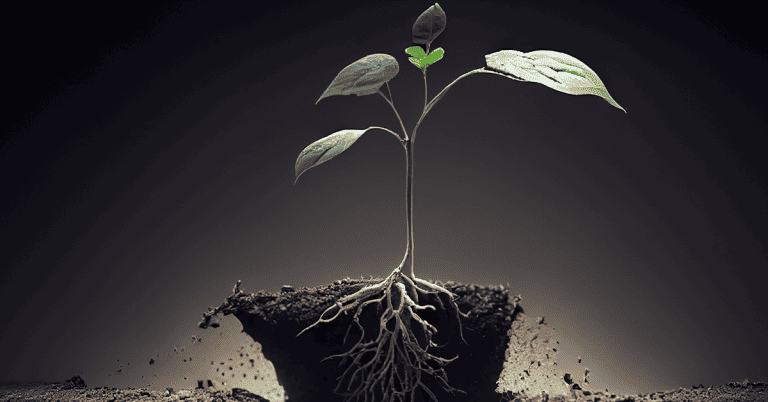Climate change is one of the most significant threats facing our planet today, and scientists and researchers are exploring ways to mitigate its impact. Enhanced Rock Weathering (ERW) is considered one of the most promising approaches for carbon capture and storage. ERW involves grinding rocks into small particles and spreading them on agricultural fields, where natural chemical reactions absorb carbon dioxide from the air and store it in the soil for thousands of years. ERW has enormous potential for drawing down carbon dioxide from the atmosphere, and researchers are working on new ways to optimize and scale this method. But what is the future of ERW, including emerging research and trends that could help shape the direction of this field in the years to come?
How Enhanced Rock Weathering is a tool to solve climate change and research trends
The issue of climate change has been a huge concern for many people and organizations over the past few years. Scientists have been looking for ways to reduce carbon dioxide levels in the atmosphere, and Enhanced Rock Weathering (ERW) has been identified as a promising technique to achieve this.
To summarize, ERW consists in the application of crushed silicate and mineral rocks on a plot of soil, usually dedicated to agricultural activities. This accelerates the natural process of weathering that normally occurs throughout millions of years and captures carbon dioxide (CO2) from the atmosphere.
Besides the reduction of CO2, this technology has the benefit of improving soil fertility, which makes the crops more productive and nutritious, helping provide a solution not only to climate change but also to global food security.
One of the most significant trends in Enhanced Rock Weathering research is the development of new technology to increase its efficiency and scalability.
With recent advancements in grinding technology, researchers can now create much finer particles than before, which should enhance the weathering process. Moreover, the use of artificial intelligence and machine learning to optimize the distribution and application of rock dust could reduce waste and improve crop yields.
For instance, researchers at Columbia University have developed a system that uses machine learning to predict the optimal amount of rock dust to apply on croplands, thereby increasing carbon sequestration and reducing alkalinity levels.
Several studies have already confirmed that Enhanced Rock Weathering has the potential to remove carbon dioxide from the atmosphere. However, emerging research is now exploring the impact of different rock types on carbon sequestration.
For instance, researchers at the University of Sheffield found that basalt, a volcanic rock commonly used in ERW, can also reduce methane emissions from agriculture. Additionally, another study published in the Journal of Cleaner Production found that bromine and iodine in the rock dust could help increase crop yields. Thus, research continues to expand our understanding of the benefits and potential applications of ERW.
Newer research also show that other materials, like glauconite, can be highly effective and cost beneficial to ERW, making the technology more efficient.
It’s also worth noting that there are other applications to ERW besides agriculture.
Other applications of ERW besides agriculture
Although Enhanced Rock Weathering is primarily conceived as a climate mitigation tool for agriculture, there are potential applications beyond this sector.
Research is now underway to explore the use of ERW in coastal regions to mitigate the acidification of ocean water. Scientists suggest that spreading rock dust in shallow coastal waters could help absorb carbon dioxide and raise water pH levels.
Moreover, researchers are also exploring the use of Enhanced Rock Weathering in mining and construction activities, where rock dust could sequester carbon dioxide from the atmosphere and help mitigate emissions from these industries.
While ERW shows great potential for carbon sequestration, several challenges hinder its implementation on a large scale. One challenge is the high cost of transporting and spreading rock dust on agricultural lands.
Moreover, the impact of Enhanced Rock Weathering on soil health, alkalinity levels, and crop yields is still not well understood. Hence, further research is needed to optimize the process and minimize the impact of rock dust on agricultural productivity.
Finally, public acceptance and support for ERW could also be a challenge, as some farmers might be hesitant to participate in a method with uncertain outcomes and financial benefits.
ERW is a promising tool, but there’s need to further research and development to further its implementation
In conclusion, Enhanced Rock Weathering is a promising tool for mitigating climate change, but it is still in the early stages of development. Researchers are actively exploring new technologies, applications, and research findings that could help optimize and scale ERW in the years to come.
While challenges remain, the potential benefits of ERW for carbon sequestration, soil health, and crop yields suggest this tool could play a significant role in combating the effects of climate change.
Investors looking to invest in carbon capture and climate tech companies should pay close attention to the advances in ERW research, as this field holds great promise for the future of climate mitigation.

